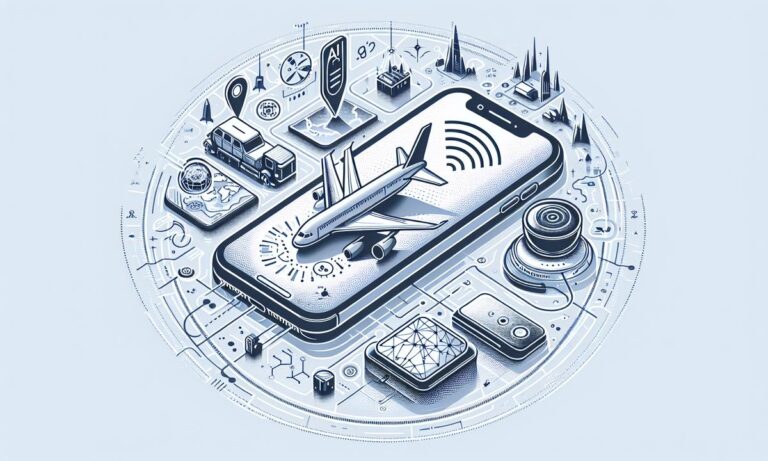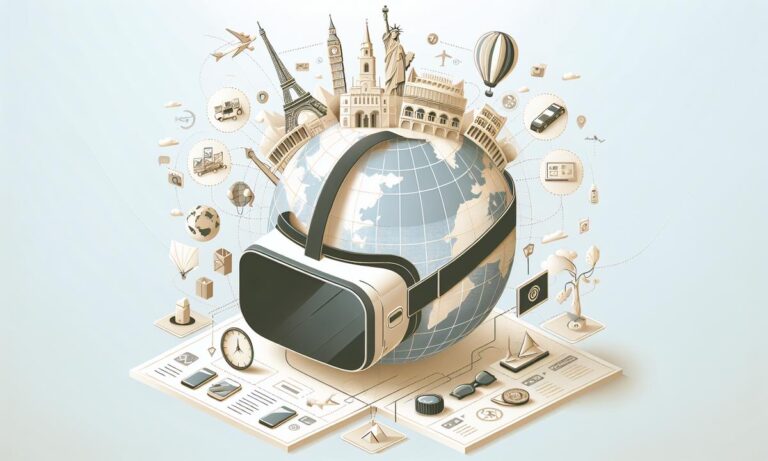In 2025, urban travelers are experiencing a significant transformation, driven by advanced smart city technologies. Innovations in artificial intelligence (AI), the Internet of Things (IoT), and constant connectivity are reshaping every aspect of urban journeys, from public transportation to personal safety. This evolution promises a future where navigation, well-being, and memorable experiences are seamlessly integrated across American cities, benefiting both residents and visitors.
The Evolving Urban Journey: A Smart Perspective
Imagine arriving in a new city; your device instantly connects to urban networks, guiding you through traffic-free routes and revealing local attractions tailored to your interests. Advanced AI algorithms, drawing insights from countless past journeys, meticulously craft paths that are both secure and highly efficient for you.
Public transit systems, once prone to delays, now offer AI-powered schedules, adaptive rerouting, and instant updates. Travelers can access these dynamic networks through integrated wearable health technology, ensuring convenience while continuously monitoring personal well-being. For a deeper dive into AI’s role in shaping travel, explore AI in Everyday Life: A Traveler’s Guide to Smart Tech & Future Journeys.
Intelligent Infrastructure: Your Urban Co-Pilot
City landscapes are now equipped with numerous IoT devices. Smart traffic lights adjust to pedestrian movements, bike-sharing docks display live availability, and public benches even offer charging points for your devices. Road sensors diligently track air quality, transmitting this crucial data straight to your phone or health wearable.
Subtle monitoring is enabled by sophisticated wearable health technology. This allows users to receive timely environmental alerts, such as pollen surges or temperature shifts, without needing to check a screen. Such integrations provide urban explorers with vital information and enhanced safety at their convenience.
Wearables: Beyond Traditional Fitness Tracking
Modern travelers effortlessly use smart rings and clip-on trackers, akin to their smartphones. Devices like the newest Oura or Circular Ring connect with city networks, providing localized health data and bespoke city recommendations. These advanced health wearables for 2025 help adventurers track stress, sleep, and physical activity on the go.
Innovative smart clothing, including garments with UV sensors, monitors exertion and exposure, keeping you synced whether you are home or traveling. These intelligent items integrate with urban infrastructure, offering live advice on routes or attractions that align with your personal health profile. The continuous evolution of wearable technology is redefining wellness in city environments.
Personalized AI Guidance: Tailoring Every Step
Personalization is paramount, with AI-powered guides suggesting everything from the quietest paths to convenient hydration spots. City applications learn from your movement patterns, recommending ideal museums on a rainy day or tranquil cafes for a relaxing break, significantly enhancing your experience of discovery.
The integration of AI not only enhances your journey but also boosts accessibility for individuals with disabilities, providing alternative routes or instant assistance based on real-time environmental data. For a comprehensive look at these AI innovations, refer to AI in Everyday Life: A Traveler’s Guide to Smart Tech & Future Journeys.
Seamless Urban Security: Real-Time Protection
Beyond mere convenience, safety is a core focus. Secure public WiFi, encrypted ticketing, and synchronized wearable devices are now standard, ensuring your digital activities are well-protected. Smart street lights and interconnected cameras proactively identify hazards or unusual activities, often before you even notice them.
While wearables gather important biometric and location data, data privacy remains a critical issue. Smart cities are addressing this by implementing strong encryption and clear consent systems to safeguard traveler data. For those who travel frequently, reviewing digital safety best practices is essential; consult Travel Safe, Stay Secure: A Digital Nomad’s Guide to Cybersecurity on the Road for practical advice.
Interactive Urban Discovery: AR and VR
Augmented (AR) and virtual reality (VR) are transforming how travelers interact with city environments. By simply holding your phone over historic landmarks, you can witness their past vividly brought to life through digital overlays. Smart glasses offer real-time translation, assisting you with ordering meals or navigating complex subway networks.
Pre-trip planning is becoming remarkably immersive. Virtual previews, like those discussed in Explore Before You Go: How Virtual Reality is Reshaping Travel Planning & Destination Discovery, enable travelers to prioritize attractions and minimize potential disappointments. This proactive approach significantly reduces travel stress and boosts overall satisfaction upon arrival.
Smart Cities and Well-Being: Environmental Insights
Travelers’ wearables now connect directly to city feeds, delivering instant notifications on weather, pollution levels, and local happenings. For individuals with asthma or allergies, adaptive alerts suggest alternative routes or optimal times to be outdoors, highlighting the preventive benefits of AI-powered health devices.
The synergy between urban databases and sophisticated fitness trackers allows both residents and visitors to react promptly to environmental shifts, from sudden heatwaves to unforeseen allergens. This collaborative approach ensures that journeys are not only more engaging but also considerably safer and more mindful of health.
Sustainable Mobility: Eco-Friendly Urban Movement
The effectiveness of green technology hinges on its practical application. Smart cities are making substantial investments in electric public transportation, flexible micro-mobility options such as e-scooters, and effortless ticketing via NFC-enabled wearables. Each initiative actively contributes to reducing the urban carbon footprint.
Anonymized user data from 2025 health wearable models provides insights into step counts, preferred travel methods, and commuter health. This valuable information informs city planning, promoting the creation of more shaded pathways, safer cycling routes, and dynamic public spaces. Everyone plays a part in, and gains from, this ongoing cycle of urban improvement.
Urban Adventures with Intelligent Guidance
Today’s technologically-equipped adventurers benefit from both efficient navigation and deeply enriched cultural experiences. Digital signage, instantly translated by smart devices, helps international visitors feel more at ease. AI-powered crowd analytics dynamically reroute foot traffic, easing congestion at popular sites and reducing stress for everyone.
Emergency services are also becoming significantly smarter. Intelligent bracelets, featuring fall detection, heart monitoring, and live location tracking, automatically notify first responders if a traveler encounters difficulties. These crucial, life-saving technologies are rapidly becoming standard elements of modern urban infrastructure.
Data Security & Privacy: Safeguarding Your Connected Journey
The rise in connectivity necessitates stringent data security measures. As health monitoring advances, cities are implementing multi-layered encryption, biometric access, and decentralized identity verification systems. While cyber threats persist, ongoing enhancements in security protocols are helping to effectively reduce risks.
Travelers are advised to consistently update their device software and be selective when sharing personal data with city applications. For detailed guidance on protecting your digital assets while enjoying smart urban environments, refer to Travel Safe, Stay Secure: A Digital Nomad’s Guide to Cybersecurity on the Road.
The Evolving Role of Public Spaces
Smart parks now showcase innovative charging trees—solar-powered and WiFi-enabled structures that recharge both devices and people. City benches can detect occupancy, allowing apps to guide travelers to available seating. Outdoor performance venues use adaptive lighting and audio, dynamically responding to crowd analysis, which transforms visitor engagement.
Civic engagement tools empower travelers to rate urban amenities directly from their health wearables, offering immediate feedback to city planners. This process democratizes urban enhancements and ensures cities remain responsive to the needs of modern, tech-savvy adventurers.
Looking Ahead: The Future of Urban Connectivity
The future points to even greater integration. Wearable health technology will effortlessly merge with augmented navigation, AI-powered services, and adaptable public infrastructure. Pervasive connectivity will transform cities from mere transit points into immersive, interactive living platforms.
Recent reports predict substantial growth for AI health devices and modular, upgradeable wearables. With faster product development cycles and cities rapidly adopting new technologies, every journey through a smart city will become a multifaceted, highly personalized exploration. Discover the newest in health wearables in Beyond the Smartwatch: Wearable Health Tech for the Modern Adventurer.
Preparing for Tomorrow: Practical Advice for Urban Travelers
Embrace the connected urban environment. Consider investing in devices that are compatible with prominent smart city networks and consistently review app permissions. Remember, your personal security encompasses both physical and digital realms; vigilance and careful privacy setting management are as crucial as planning your itinerary.
Actively engage with interactive city features, such as public AR installations, real-time translation tools, and local event feeds, to enrich your travel experience. Utilize responsive health wearables to monitor your activity levels, hydration, and environmental exposure. Make use of city applications for timely alerts about transit changes or environmental hazards, and always seize opportunities to provide feedback through quick in-app surveys.
Why Smart Cities Matter for Travelers
A genuinely smart city offers more than just streamlined transit or quicker WiFi; it aims to elevate every aspect of your journey, weaving together adventure with improved health, robust security, and effortless enjoyment. As AI and wearables continue to advance, urban travel across the US is set for a transformation far surpassing mere convenience.
Whether you are a daily commuter, an international explorer, or a casual weekend visitor, smart city technology promises that tomorrow’s urban adventures will be safer, healthier, and more fulfilling. Begin exploring this exciting future today—your connected journey has just commenced.




